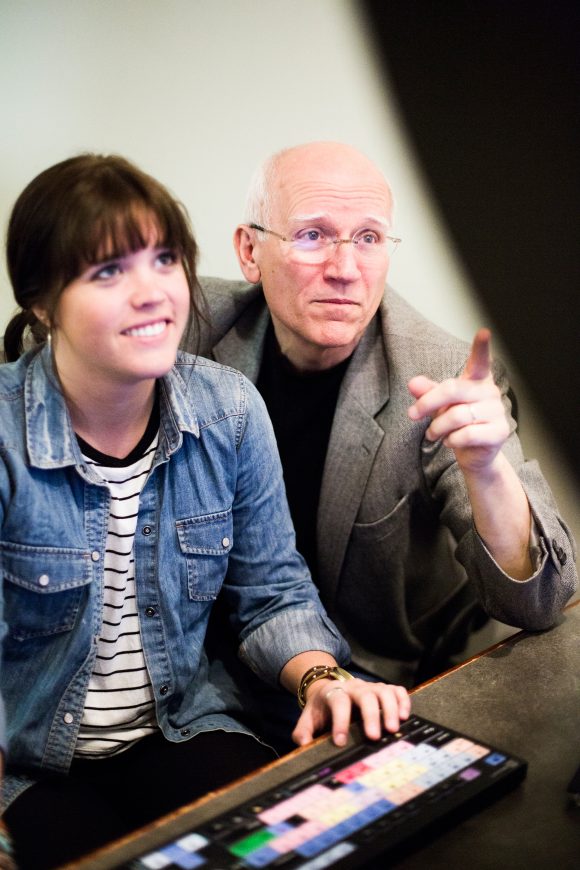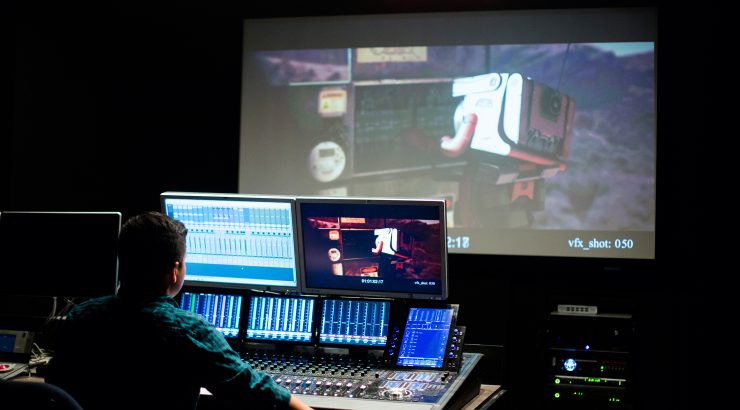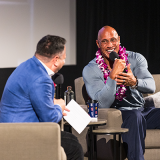Teaching the Art of Editing
May 25, 2016
An oft repeated aphorism says that a film is written three times: first by the screenwriter, then by the director and finally by the editor.
Certainly the screenwriter lays the foundation, although the film may bear little resemblance to the final script. The director, who interprets the screenplay, may have a different vision or be limited by the budget, by the actors’ performances or by any other of a million other obstacles or exigencies. And finally comes the editor, who shapes and interprets the material, hoping to create or preserve, as needed, a coherent and compelling story.
In handling material created by others, the editor is often caught in the cross-fire of conflicting opinions. Thus he or she has to be a “sly politician,” says Professor Scott Arundale (The Wash, Hairspray, Rambo III, Punch Line), quoting director Alexander Payne (Nebraska). “An editor has many bosses,” Arundale says. “His first priority is to the story and keeping to the director’s vision. But he or she must also answer to the producer or the studio or the network or to the person writing the paycheck.”
When things go south and arguments or differences of opinion create a stalemate, the editor can be caught in the middle. “To avoid ‘shooting the messenger,’” Arundale advises, the editor “must always maintain a ‘can-do’ attitude, even in the face of adversity.”
Fixing technical, coverage or performance problems demands that an editor be a problem solver, Arundale says, as well as a passionate observer of human nature. Professor Paul Seydor (White Men Can’t Jump, Tim Cup, Turner and Hooch, Guess Who) looks for “a real sensitivity toward evaluating performance and narrative as they express drama and story.”

To help students understand whether story is an interest that drives them, Seydor asks them questions: “’What’s the last novel you read? When’s the last time you went to the Music Center to see a play or hear a concert? How much music do you listen to?’ In other words, are drama, storytelling, etc. pursuits that are important enough in your life that they are also part of your recreation as well as the work you’d like to do?”
For those who answer yes, there are other expectations: good communication skills, technical skills, enormous patience and an appreciation for the finest details. Although students often think, mistakenly, that editors are “not expected to be outspoken” or are rarely asked for an opinion, Arundale points out that the successful editor must have a point-of-view and not be a “shrinking violet.”
To prepare students to work as editors, Seydor and Arundale provide a wide variety of exercises and on and off set experiences—from writing script coverage to supervising continuity to data wrangling—to help them understand the entire filmmaking process and develop a strong sense of story. Yet teaching where and when to cut is as much about practice as about having clear rules about what works and why.
“It’s very difficult if not impossible to generalize about where to cut and why,” says Seydor, “so I show them on a case-by-case, cut-by-cut basis so that they learn by example about context, the needs of story, performance, narrative, and the like.
“The same holds with the various editing decisions: I discuss at great length the implications of choosing a close-up versus an over-the- shoulder versus a cowboy shot (a ¾ shot) or a full-shot. Why you go to the master, when you don’t, when you stay in and when you drop back. Again, these are very difficult to generalize about, so you simply take them on a case-by-case basis.”
To gain experience in making creative decisions, students begin editing short scenes and eventually move to an entire movie, working on mid-level projects in the second year and editing thesis films in the third year.
Seydor begins in the fundamentals class by giving students four scenes to cut—and no instructions. “I want to see what they do on their own,” he says. Then he reviews the cuts, “discussing the implications of their decisions, correcting the many outright mistakes, and then telling them how I would like the scene to be edited,” thus giving students the experience of working to meet a director’s goals. Finally, they move into fine cutting, handling such tasks as removing lines.
Students are also required to do basic tracking, effects and music work so that the director, the producer, and the studio can watch a cut as if were a finished film. To do anything less is to fail to communicate the editor’s vision for the work. Sound, Arundale and Seydor agree, is critical to selling an edit, yet students often believe that sound editors or others will handle that portion of the work after the editor is done.
“Many student editors take sound for granted and yet it is crucial to telling the story,” says Arundale. “I like to show them how to appreciate pace and rhythm in the flow of dialogue and how that is reflected in the pace of cutting.”
The same lessons are reinforced by film analysis and by regular practice. Seydor asks students to “bring in examples of editing from films that they think have really good editing and explain why.” Arundale asks his students to cut at least one scene a week, to get them “battle ready” for both their final projects and the job market.
Clearly, the practice and mentoring Dodge College editing students get pays off. Seydor reports almost 100% employment among editing grads.
When an editing friend recently asked Seydor for crew for his film, Seydor put the word out to as many students as he could. “And they all turned him down—because they were all working already! And he’s an editor with a seriously high reputation,” he adds.
Both professors add that they have been repeatedly told by members of the American Cinema Editors (ACE), the preeminent editors guild, that Chapman editors are “consistently the best prepared students out of film school that they come across.” Or as Seydor puts it “We must be doing something right.”


